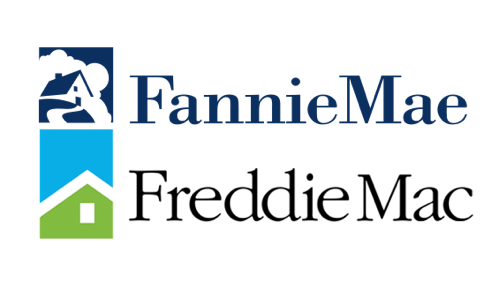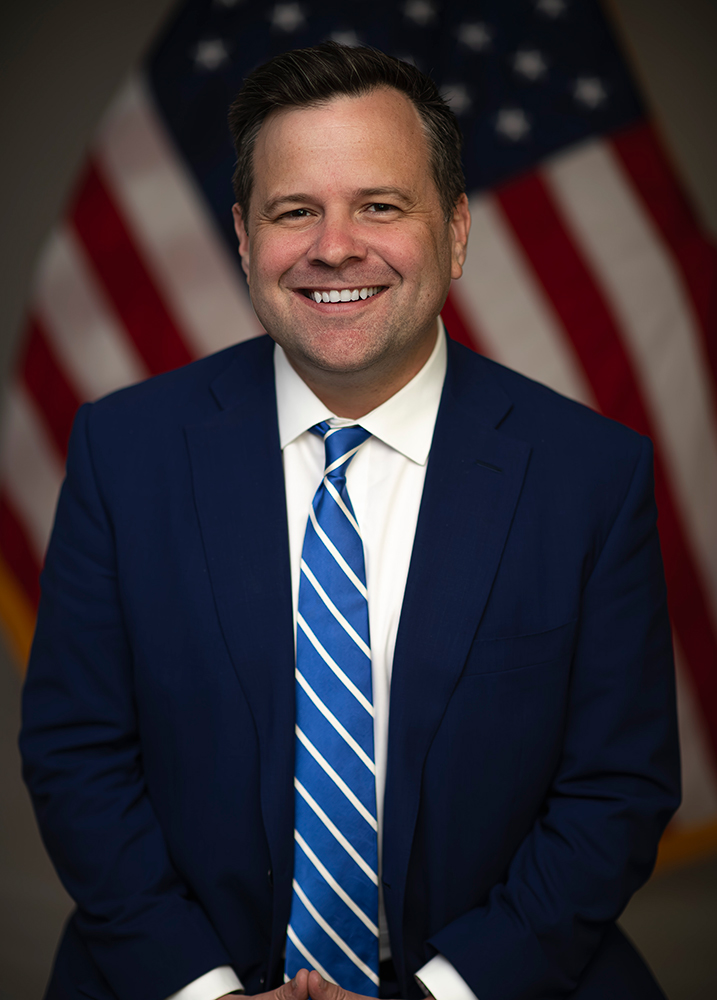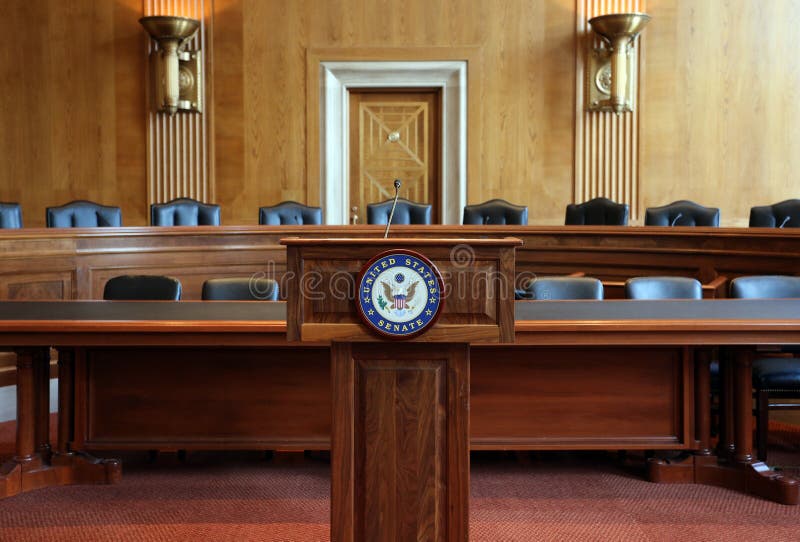
Trump Signals Major Shift - Fannie Mae and Freddie Mac Privatization on the Horizon
Trump Signals Major Shift: Fannie Mae and Freddie Mac Privatization on the Horizon
Administration Eyes Historic Move That Could Reshape America's $13 Trillion Mortgage Market
President Donald Trump announced Tuesday he is giving "very serious consideration" to privatizing Fannie Mae and Freddie Mac, the government-sponsored enterprises that have remained under federal conservatorship since the 2008 financial crisis. The potential move would represent one of the most significant financial policy shifts in decades, affecting the backbone of America's housing finance system.

Did you know? Fannie Mae and Freddie Mac are government-sponsored enterprises that don't lend money directly but help make home loans more available by buying mortgages from lenders and turning them into securities for investors. During the 2008 financial crisis, they were placed under federal conservatorship—meaning the government took control to prevent their collapse. Though intended as a temporary fix, they remain under government oversight today and continue to play a key role in supporting the U.S. housing market.
"I am giving very serious consideration to bringing Fannie Mae and Freddie Mac public," Trump wrote on Truth Social. "Fannie Mae and Freddie Mac are doing very well, throwing off a lot of CASH, and the time would seem to be right."
The announcement sent shockwaves through financial markets, where stocks of both entities have already surged more than 350% since Trump's election victory as investors anticipated this moment. The two government-sponsored enterprises control approximately 70% of the U.S. mortgage market, making any privatization effort a seismic event for millions of American homeowners and the broader economy.
Did you know that following Donald Trump's second electoral victory in November 2024, the stocks of mortgage giants Fannie Mae (FNMA) and Freddie Mac (FMCC) have experienced a remarkable surge of over 350%? This dramatic price increase has been primarily driven by investor speculation that the Trump administration might end the government conservatorship that has controlled both entities since the 2008 financial crisis, potentially allowing shareholders to benefit from their profits once again. The appointment of William Pulte as head of the Federal Housing Finance Agency has further fueled privatization hopes, while prominent investor Bill Ackman, who has held positions in both companies for over a decade, projects a collective valuation of approximately $34 per share at a possible IPO in late 2026, though analysts suggest the actual re-privatization process could extend into 2027.
Behind Closed Doors: The Power Players Driving Change
Trump's announcement follows a series of dramatic moves by newly appointed Federal Housing Finance Agency Director William Pulte, who was confirmed in March and has wasted no time reshaping both institutions. Since taking control, Pulte has removed 14 board members from both Fannie Mae and Freddie Mac, installed himself as chairman of both boards, and fired Freddie Mac CEO Diana Reid.

These personnel changes signal that what one industry insider described as the "governance blitz phase" is complete, with focus now shifting toward capital building and potential privatization. Pulte, whose grandfather founded PulteGroup, one of the nation's largest homebuilders, has embraced social media for governance announcements, mirroring Trump's communication style.
Treasury Secretary Scott Bessent has suggested the government's stakes in both entities could potentially be moved to a new U.S. sovereign wealth fund already authorized by President Trump. This fund could reach $1 trillion by 2040, according to administration estimates, with Fannie and Freddie contributing an estimated $30 billion annually once properly capitalized.
Table: Overview of Sovereign Wealth Funds (SWFs), their purpose, funding sources, and examples to help understand their global economic role.
| Aspect | Description | Examples |
|---|---|---|
| Definition | State-owned investment funds managing national reserves for long-term goals | — |
| Funding Sources | Oil & gas revenues, trade surpluses, foreign currency reserves | Norway (oil), China (reserves), UAE (oil) |
| Key Objectives | Stabilization, savings for future generations, economic diversification | — |
| Investment Focus | Global assets: stocks, bonds, real estate, infrastructure, private equity | Tech stocks, global real estate, infrastructure |
| Types of SWFs | Stabilization, Savings, Reserve Investment, Development | Chile Stabilization Fund, Singapore’s Temasek |
| Largest SWFs | Manage trillions in assets, influence global markets | Norway GPFG, Abu Dhabi Investment Authority |
| Global Impact | Over $11 trillion under management, shaping markets and industries | — |
The $300 Billion Question: What Privatization Really Means
The financial implications are staggering. Billionaire investor Bill Ackman, a longtime advocate for privatization, estimates such a move could generate additional federal profit of $300 billion. However, the transition would likely trigger immediate consequences for American homebuyers and the broader housing market.
Financial analysts predict mortgage rates could climb by 25 to 60 basis points during the transition period, potentially pushing the current 6.96% average rate toward 7.5% or 8%. This increase stems from the removal of implicit government guarantees that currently allow investors to accept lower returns on mortgage-backed securities.
Summary of the Impact of Fannie Mae and Freddie Mac Privatization on U.S. Mortgage Rates
| Aspect | Details |
|---|---|
| Current Mortgage Rate Baseline | 6.859% average 30-year fixed-rate conforming mortgage rate as of May 21, 2025 |
| Projected Rate Increase Range | 0.5 to 1 percentage point increase |
| Estimated Additional Annual Cost | $730 to $1,670 additional annual cost for average borrower |
| Reasons for Rate Increase | Removal of government guarantees, increased capital requirements, market recalibration |
| Initial Impact Timeline | Immediate increase of 0.5-1 percentage point in the first year |
| Medium-Term Adjustment | Potential moderation of rates by 0.1 to 0.3 percentage points after initial shock |
| Implementation Challenges | Significant administrative and legislative hurdles due to $7 trillion mortgage backing |
| Broader Market Implications | Reduced mortgage liquidity, higher costs for multifamily housing, impact on affordability and home sales |
"Without the government backstop, investors would demand higher yields, and that cost gets passed directly to borrowers," explained one mortgage industry analyst who requested anonymity due to the sensitivity of ongoing discussions.
Did you know? Implicit government guarantees refer to the widespread belief that the U.S. government would step in to support government-sponsored enterprises (GSEs) like Fannie Mae and Freddie Mac if they faced financial trouble—even without an official guarantee. Before the 2008 financial crisis, investors assumed these GSEs were "too important to fail," which allowed them to borrow at lower rates. This assumption was proven true when the government placed them into conservatorship during the crisis, reinforcing the idea that such support, though unofficial, was effectively real.
The rate impact could be particularly severe for first-time homebuyers and those seeking smaller loans, potentially exacerbating an already challenging affordability crisis in the housing market.
Market Mechanics: The Trillion-Dollar Trading Floor
The privatization would disrupt the To-Be-Announced mortgage-backed securities market, which handles $290 billion in daily trading volume. Investment firm PIMCO has warned that any significant disruption to this market could create an "economic heart attack" with effects rippling far beyond housing.
Table: Overview of the To-Be-Announced (TBA) Mortgage-Backed Securities Market, highlighting its function, importance, and impact on the U.S. housing finance system.
| Aspect | Description |
|---|---|
| What It Is | A forward market where agency mortgage-backed securities are traded before the exact loans are known |
| Key Participants | Fannie Mae, Freddie Mac, Ginnie Mae, mortgage lenders, institutional investors |
| Standardization | Trades are based on general characteristics (issuer, coupon, maturity), not specific loan pools |
| Market Role | Provides liquidity and efficiency to the secondary mortgage market |
| Impact on Borrowers | Helps lower mortgage rates and allows lenders to offer rate locks |
| Market Size | One of the largest fixed-income markets globally, second only to U.S. Treasuries |
| Settlement Timing | Specific loan pools are delivered 48 hours before the settlement date |
Professional traders are already positioning for the transition. Event-driven investors are treating Fannie Mae and Freddie Mac shares like "deeply out-of-the-money call options on regulatory reform," with sophisticated hedging strategies emerging around Treasury hearings and key political milestones.
One Wall Street strategist noted that MBS spreads could widen by 15 to 25 basis points versus 10-year Treasury bonds during the transition, as markets price in reduced government backing. This technical adjustment alone could affect borrowing costs across the entire mortgage ecosystem.
//CHART_INSERT:{"caption":"Conceptual illustration of Mortgage-Backed Securities (MBS) spreads widening against 10-year Treasury bonds.", "data_search_queries":["MBS spread vs 10-year Treasury historical chart", "impact of credit risk on bond spreads"]}
The Affordability Paradox: Winners and Losers
The privatization debate reveals a fundamental tension in American housing policy. While privatization could generate significant revenue for the federal government and potentially increase market efficiency over time, the immediate impact could make homeownership less accessible for millions of Americans.

Regional banks, which rely heavily on Fannie Mae and Freddie Mac for mortgage funding, could face margin compression as guarantee fees rise. Meanwhile, larger institutions might cherry-pick more profitable jumbo and super-conforming loans, leaving smaller lenders to navigate a more challenging credit environment.
Mortgage insurance companies could see increased demand as privatized entities potentially tighten lending standards, while homebuilders face the prospect of reduced buyer demand if rates rise substantially.
Political Arithmetic: Navigating the Path Forward
Despite Trump's optimistic timeline suggesting a decision "in the near future," the political and technical challenges remain formidable. Former FHFA head Mark Calabria estimated in late 2024 there was a 70% chance of privatization within four years but "zero chance" it would happen in 2025.

The administration appears to be moving more aggressively than previously expected, though Senate Banking Committee oversight could slow the process. Any privatization would require navigating complex legal challenges, including ongoing takings lawsuits from hedge funds seeking compensation for the government's profit sweep during conservatorship. //DID_YOU_KNOW_INSERT:{"caption":"Understanding 'Takings Lawsuits' in the Context of GSE Reform", "search_queries":["takings clause Fifth Amendment explained", "GSE shareholder lawsuits conservatorship", "eminent domain government profit sweep"]}
The 2026 midterm elections loom as a critical deadline. Loss of Republican Senate control could effectively kill fast-track privatization efforts, creating urgency for the administration to make substantial progress within the next 18 months.
Capital Requirements: The IPO of the Century
Perhaps the most daunting challenge involves capitalization. Both entities would need to raise approximately $275 billion in combined capital to meet regulatory requirements for full privatization. This would likely require one of the largest initial public offerings in history, far exceeding traditional market capacity for such transactions.
Did you know that Mortgage-Backed Securities (MBS) spreads versus 10-year Treasury bonds are currently near 10-year highs, with the spread between 30-year fixed mortgage rates and 10-year Treasury yields reaching 2.5 percentage points as of April 2025—significantly wider than the historical norm of 1.5-2%? This unusual market condition persists despite strong housing collateral and relatively low mortgage issuance, largely driven by the Federal Reserve's asymmetric approach to quantitative tightening (reducing MBS holdings by approximately $510 billion since May 2022 while slowing Treasury securities roll-off), the aftermath of regional banking failures in 2023, and a frozen mortgage market where only about 5.2% of existing mortgages have rates high enough to incentivize refinancing, creating a paradoxical situation where non-agency RMBS products have seen narrowing spreads while agency MBS spreads remain stubbornly wide.
The Treasury Department currently holds senior preferred shares that would need to be restructured or converted, adding layers of complexity to any privatization timeline. With combined net worth of about $150 billion, the capital requirements represent a massive undertaking that could take years to complete properly.
Global Implications: A Model for Financial Reform
International observers are watching closely, as successful privatization could provide a template for similar reforms worldwide. However, the unique position of Fannie Mae and Freddie Mac in the American financial system makes direct comparisons challenging.
The entities' role in maintaining liquidity for 30-year fixed-rate mortgages - a product virtually unavailable in most other countries - adds complexity to any privatization effort. Preserving this market function while removing government backing represents an unprecedented challenge in financial engineering.
Table: Key Characteristics and Global Rarity of the U.S. 30-Year Fixed-Rate Mortgage, highlighting what makes it unique in the international housing finance landscape.
| Aspect | Description |
|---|---|
| Loan Term | Fixed for 30 years |
| Payment Stability | Monthly payments remain constant over the life of the loan |
| Interest Rate Type | Fixed (does not change with market rates) |
| Global Rarity | Rare outside the U.S.; most countries use variable or shorter fixed-rate terms |
| Lender Risk | Higher due to long-term rate lock, mitigated by GSE securitization |
| Government Role | Enabled by Fannie Mae and Freddie Mac buying and securitizing loans |
| Market Support | Supported by the TBA market, providing liquidity and investor confidence |
| Homeowner Benefit | Long-term affordability and protection from interest rate spikes |
Looking Ahead: Scenarios and Strategies
Industry experts suggest several potential middle-path approaches, including partial privatization with retained government guarantees or gradual transitions that allow market adjustment over time. The administration's emphasis on keeping mortgage rates below 7.5% suggests awareness of the political risks associated with dramatic rate increases.
Professional investors are positioning for multiple scenarios, with volatility expected around key political milestones including White House policy papers expected this summer and the fiscal year 2026 budget process beginning in February.
As one senior mortgage executive noted, "The question isn't whether privatization will happen anymore - it's how quickly they can execute without breaking the mortgage market in the process."
The coming months will test whether the Trump administration can engineer one of the most complex financial transitions in American history while maintaining the delicate balance that keeps homeownership accessible for millions of Americans. The stakes, measured in trillions of dollars and millions of homes, could hardly be higher.